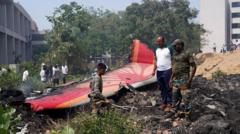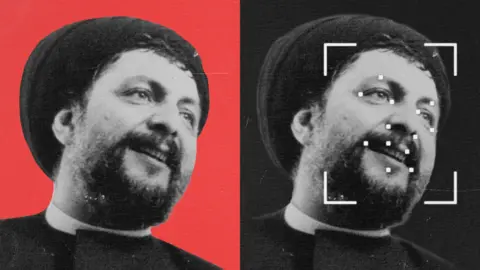In a critical development in the investigation of the Air India crash, officials have confirmed the retrieval of flight recorder data from the Boeing 787-8 Dreamliner that tragically crashed during takeoff on June 12 near Ahmedabad airport. The civil aviation ministry announced that this significant step will aid in the ongoing probe into the incident, which resulted in the loss of at least 270 lives.
The aircraft, which was en route to London, went down less than a minute after takeoff, marking one of India's most catastrophic air disasters. Both Enhanced Airborne Flight Recorders (EAFRs)—commonly known as "black boxes"—were recovered from the crash site shortly after the incident, one retrieved from a nearby rooftop and the other from the wreckage itself. The analysis of this critical data could take several weeks before any public findings are shared by the federal authorities.
The flight data recorders are equipped to capture intricate details, including the positional status of flaps and gears, engine performance, fuel flow, and other essential metrics, all of which are vital in reconstructing the final moments of the flight. The cockpit voice recorder (CVR) provides additional context with audio of pilot communications and sounds within the cockpit, offering investigators a comprehensive view of the circumstances leading to the disaster.
The recovery and initial analysis of the data were conducted by a team from India's Aircraft Accident Investigation Bureau (AAIB) in collaboration with the US National Transportation Safety Board (NTSB). NTSB Chairwoman Jennifer Homendy expressed the hope that the findings from the investigation would be made public promptly for the sake of aviation safety and public awareness.
Despite the successful recovery of the recorders, some aviation specialists have raised concerns regarding the timeline of the data retrieval, labeling the nearly two-week wait as atypical. Air India Flight 171 had a brief flight time of less than 40 seconds before it crashed into a densely populated area, making the incident all the more alarming. The aircraft was piloted by Captain Sumeet Sabharwal and co-pilot Clive Kundar, who transmitted a mayday call moments before the crash, leaving many questions as to what went wrong in such a short period.
The aircraft, which was en route to London, went down less than a minute after takeoff, marking one of India's most catastrophic air disasters. Both Enhanced Airborne Flight Recorders (EAFRs)—commonly known as "black boxes"—were recovered from the crash site shortly after the incident, one retrieved from a nearby rooftop and the other from the wreckage itself. The analysis of this critical data could take several weeks before any public findings are shared by the federal authorities.
The flight data recorders are equipped to capture intricate details, including the positional status of flaps and gears, engine performance, fuel flow, and other essential metrics, all of which are vital in reconstructing the final moments of the flight. The cockpit voice recorder (CVR) provides additional context with audio of pilot communications and sounds within the cockpit, offering investigators a comprehensive view of the circumstances leading to the disaster.
The recovery and initial analysis of the data were conducted by a team from India's Aircraft Accident Investigation Bureau (AAIB) in collaboration with the US National Transportation Safety Board (NTSB). NTSB Chairwoman Jennifer Homendy expressed the hope that the findings from the investigation would be made public promptly for the sake of aviation safety and public awareness.
Despite the successful recovery of the recorders, some aviation specialists have raised concerns regarding the timeline of the data retrieval, labeling the nearly two-week wait as atypical. Air India Flight 171 had a brief flight time of less than 40 seconds before it crashed into a densely populated area, making the incident all the more alarming. The aircraft was piloted by Captain Sumeet Sabharwal and co-pilot Clive Kundar, who transmitted a mayday call moments before the crash, leaving many questions as to what went wrong in such a short period.





















